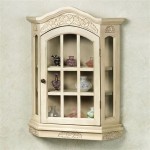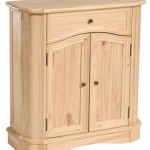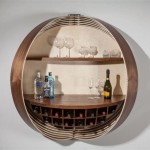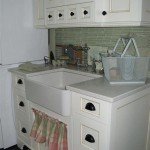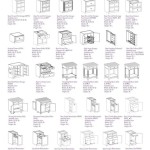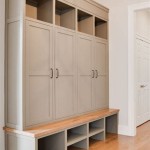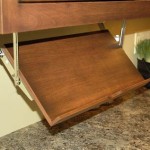How To Clean Sticky Grease Off Wooden Kitchen Cabinets
Wooden kitchen cabinets, while aesthetically pleasing and often adding value to a home, are notoriously susceptible to accumulating a sticky grease film. This greasy residue, a byproduct of cooking, settles onto cabinet surfaces, attracting dust and debris, creating a stubborn and unsightly layer. Regular cleaning is crucial to maintain the cabinets' appearance and prevent long-term damage to the wood finish. This article outlines effective methods for removing sticky grease from wooden kitchen cabinets, emphasizing the importance of gentle cleaning techniques and appropriate cleaning solutions.
The buildup of grease on kitchen cabinets is primarily due to the airborne particles released during cooking. Frying, sautéing, and even boiling food can release oil and steam, which rise and deposit onto nearby surfaces. Over time, this accumulation hardens and becomes sticky, making it difficult to remove with simple wiping. The type of wood finish also plays a role; porous or unfinished wood is more prone to absorbing grease, making it even harder to clean than cabinets with a protective sealant.
Before embarking on any cleaning method, it is essential to identify the type of finish on your wooden cabinets. This is crucial because the wrong cleaning solution can damage or strip the finish. Common types of finishes include varnish, polyurethane, lacquer, and painted surfaces. A simple test can help determine the finish type. In an inconspicuous area, such as the inside of a cabinet door, gently rub a small amount of mineral spirits onto the surface. If the finish becomes sticky or removes easily, it is likely a lacquer or shellac finish. If the finish remains intact, it is likely a varnish or polyurethane finish. For painted cabinets, test the cleaning solution in a hidden area to ensure it doesn't cause discoloration or damage to the paint.
Understanding the Impact of Cleaning Solutions
The effectiveness of cleaning solutions depends largely on their composition and how they interact with grease and the cabinet's finish. Harsh chemicals, while potentially effective at dissolving grease, can also damage or discolor the wood, strip the finish, or even cause warping. Therefore, it's crucial to use gentle, non-abrasive cleaning agents specifically formulated for wood surfaces.
Many commercially available wood cleaners are designed to remove grease and grime without damaging the finish. These products typically contain mild detergents and solvents that cut through grease while protecting the wood. Always read the product label carefully and follow the manufacturer's instructions. Before applying any cleaner to the entire cabinet surface, test it on an inconspicuous area to ensure it doesn't cause any adverse reactions.
Alternatively, several homemade cleaning solutions can be effective for removing sticky grease from wooden cabinets. These solutions often utilize common household ingredients, making them a cost-effective and eco-friendly option. However, even with homemade solutions, testing in an inconspicuous area is essential before widespread application.
Regardless of the cleaning solution chosen, always use soft cloths or sponges to avoid scratching the cabinet finish. Microfiber cloths are particularly effective for cleaning wood surfaces, as they are gentle yet absorbent and can lift dirt and grease without leaving streaks or residue. Avoid using abrasive scrub brushes or scouring pads, as these can easily damage the finish.
Gentle Cleaning Techniques for Sticky Grease Removal
The primary goal when cleaning sticky grease from wooden cabinets is to loosen and lift the grease without damaging the underlying finish. This often requires a combination of gentle cleaning solutions and careful application techniques. Patience and persistence are key, as stubborn grease buildup may require multiple applications and gentle scrubbing.
One of the most effective methods for removing sticky grease is to use a solution of warm water and mild dish soap. Dish soap is designed to cut through grease, making it an ideal cleaning agent for kitchen cabinets. Mix a few drops of dish soap into a bowl of warm water and thoroughly stir until combined. Dip a soft cloth or sponge into the soapy water, wring out the excess, and gently wipe the cabinet surfaces. Focus on areas with heavy grease buildup, but avoid applying excessive pressure. Rinse the cloth frequently in clean water to remove any accumulated grease and dirt. After wiping the cabinets with soapy water, rinse them with a clean, damp cloth to remove any soap residue. Finally, dry the cabinets thoroughly with a clean, dry cloth to prevent water spots and moisture damage.
Another effective cleaning solution is a mixture of white vinegar and water. Vinegar is a natural degreaser and can help to dissolve sticky grease buildup. Mix equal parts white vinegar and warm water in a spray bottle. Lightly spray the solution onto the cabinet surfaces, allowing it to sit for a few minutes to loosen the grease. Wipe the cabinets with a soft cloth or sponge, using gentle pressure to remove the grease. Rinse the cabinets with a clean, damp cloth to remove any vinegar residue. Dry the cabinets thoroughly with a clean, dry cloth. Note that while vinegar is generally safe for most wood finishes, it is acidic and can potentially damage certain finishes, especially lacquer or shellac. Always test the vinegar solution in an inconspicuous area before applying it to the entire cabinet surface.
Baking soda is another natural cleaning agent that can be effective for removing sticky grease. Baking soda is mildly abrasive and can help to scrub away stubborn grease buildup. Make a paste of baking soda and water, using just enough water to create a thick consistency. Apply the paste to the greasy areas of the cabinet, using a soft cloth or sponge to gently scrub the surface. Avoid applying excessive pressure, as baking soda can scratch the finish if used too aggressively. Rinse the cabinets thoroughly with a clean, damp cloth to remove all traces of baking soda. Dry the cabinets thoroughly with a clean, dry cloth. It is important to exercise caution when using baking soda on wooden cabinets, as its abrasive nature can potentially damage delicate finishes. Always test the baking soda paste in an inconspicuous area before applying it to the entire cabinet surface, and use a very gentle touch when scrubbing.
Addressing Stubborn Grease Stains
Despite diligent cleaning efforts, some stubborn grease stains may persist on wooden kitchen cabinets. These stains often require more targeted cleaning methods and specialized cleaning solutions. Several options exist for addressing these difficult grease stains, ranging from commercial degreasers to homemade remedies.
For particularly stubborn grease stains, consider using a commercial degreaser specifically formulated for wood surfaces. These products typically contain stronger solvents than general-purpose cleaners and can effectively dissolve hardened grease buildup. Always read the product label carefully and follow the manufacturer's instructions. Protect surrounding surfaces, such as countertops and floors, from accidental overspray. Apply the degreaser to a soft cloth and gently wipe the affected area. Avoid spraying the degreaser directly onto the cabinet surface, as this can lead to uneven application and potential damage to the finish. Allow the degreaser to sit for the recommended amount of time, then wipe away the residue with a clean, damp cloth. Dry the cabinets thoroughly with a clean, dry cloth.
Another option for removing stubborn grease stains is to use a mixture of vegetable oil and baking soda. While it may seem counterintuitive to use oil to remove grease, vegetable oil can actually help to dissolve hardened grease buildup. Mix equal parts vegetable oil and baking soda into a paste. Apply the paste to the greasy stains and gently rub the surface with a soft cloth or sponge. The baking soda will provide a mild abrasive action, while the vegetable oil will help to break down the grease. Allow the paste to sit for several minutes, then wipe away the residue with a clean, damp cloth. Dry the cabinets thoroughly with a clean, dry cloth. This method is particularly effective for removing grease stains that have been present for a long time and have become deeply embedded in the wood finish.
Another possible solution is to use a hairdryer to soften the grease. Applying low heat to the grease for a short time can loosen it up, making it easier to wipe away. Keep the hairdryer moving and hold it a few inches away from the wood to avoid damaging the finish. Once the grease is warm, gently wipe it away with a microfiber cloth.
In cases where the grease has deeply penetrated the wood, it might require professional treatment. Consider consulting with a furniture restoration specialist for advice on how to remove stubborn grease stains without damaging the cabinets.

How To Clean Kitchen Cabinets Everyday Skate

How To Clean Sticky Grease Off Kitchen Cabinets Ovenclean

How Remove Grease From Wood Kitchen Cabinets

How To Quickly Clean Cabinets Remove Grease Gunk Andrea Jean

How To Clean Sticky Grease Off Kitchen Cabinets
How To Clean Sticky Wood Kitchen Cabinets Quora

How To Easily Clean Sticky Wood Kitchen Cabinets Creative Homemaking

How To Easily Clean Sticky Wood Kitchen Cabinets Creative Homemaking

How To Clean Sticky Grease Off Kitchen Cabinets Infinity

Clean Sticky Grease Off Kitchen Cabinets In 5 Mins Or Less Torera George
Related Posts

